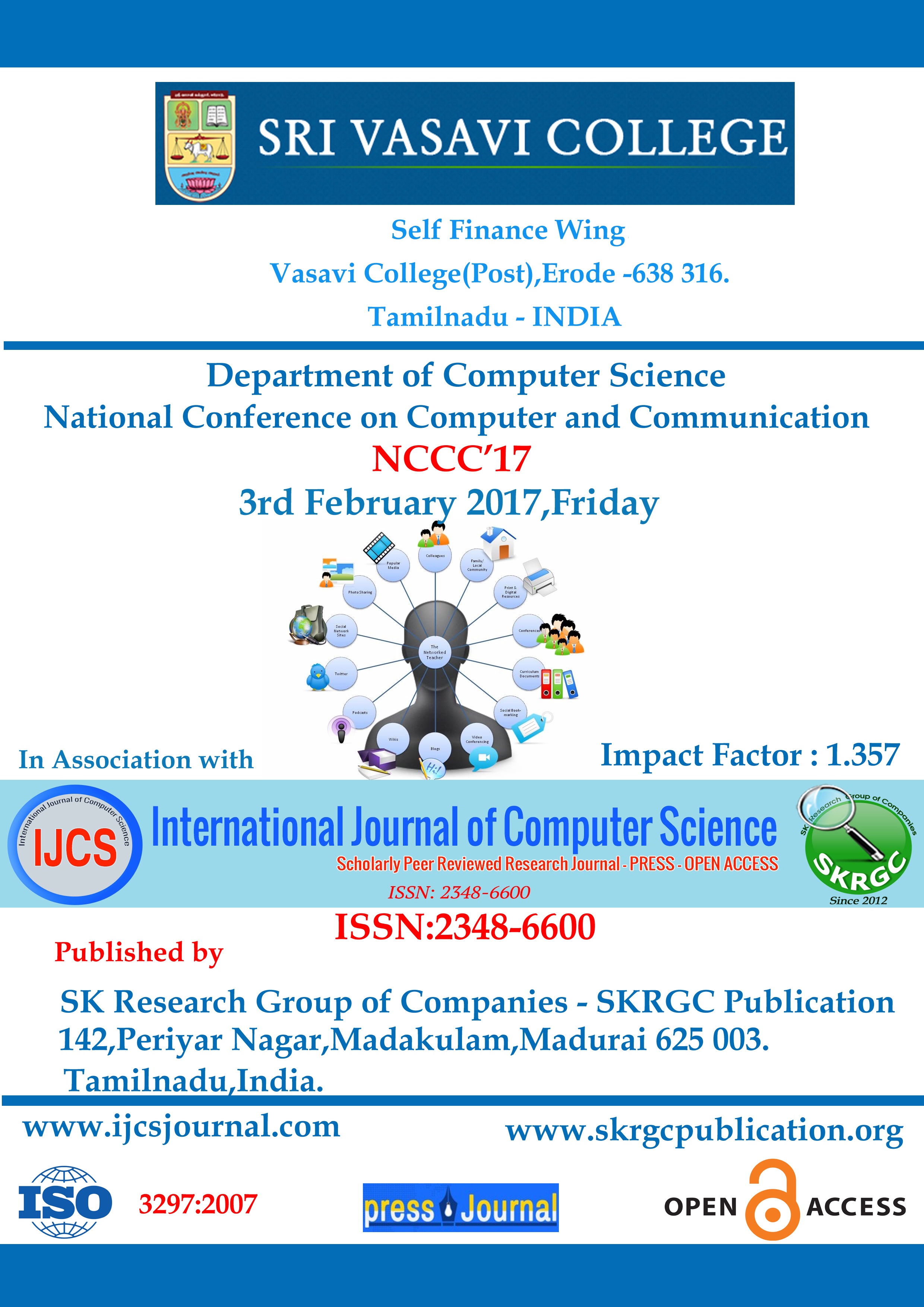STEGANOGRAPHY USING REVERSIBLE TEXTURE SYNTHESIS
Sri Vasavi College, Erode Self-Finance Wing, 3rd February 2017. National Conference on Computer and Communication, NCCC’17. International Journal of Computer Science (IJCS) Published by SK Research Group of Companies (SKRGC)
Download this PDF format
Abstract
Steganography is the science and art of covert communication, which aims to hide the secret messages into a cover medium while achieving the least possible statistical detect ability. We propose a novel approach for steganography using a reversible texture synthesis. A texture synthesis process resample’s a smaller texture image, which synthesizes a new texture image with a similar local appearance and an arbitrary size. The texture synthesis process into steganography to conceal secret messages. In contrast to using an existing cover image to hide messages, our algorithm conceals the source texture image and embeds secret messages through the process of texture synthesis. This allows us to extract the secret messages and source texture from a steganography synthetic texture. First, our scheme offers the embedding capacity that is proportional to the size of the steganography texture image. Second, a steganography algorithm is not likely to defeat our steganographic approach. Third, the reversible capability inherited from our scheme provides functionality, which allows recovery of the source texture. Experimental results have verified that our proposed algorithm can provide various numbers of embedding capacities, produce a visually plausible texture images, and recover the source texture.
References
[1] N. Jhanwar, S. Chaudhuri, G. Seetharaman, B. Zavidovique,” Content Based Image Retrieval Using Motif Cooccurence Matrix,” Image Vis.Comput., vol. 22, no. 14, pp. 1211–1220, Dec. 2004.
[2] H.-W. Yoo, H.-S. Park and D.-S. Jang, “Expert system for color image retrieval,” Expert Syst. Appl., vol. 28, no. 2, pp. 347–357, Feb. 2005.
[3] E. J. Delp and O. R. Mitchell, “Image coding using block truncation coding,” IEEE Trans. Commun., vol. COM-27, no. 9, pp. 1335–1342, Sep. 1979.
[4] C-C Lai and Y-C Chen, “A user-oriented image retrieval system based on interactive genetic algorithm,” IEEE Trans. Instru. Measur, vol. 60, no. 10, pp. 3318-3325, Oct.2011.
[5] S.-B. Cho and J.-Y. Lee, “A human-oriented image retrieval system using interactive genetic algorithm”, IEEE Trans. Syst., Man, Cybern. A, Syst.,Humans, vol. 32, no. 3, pp. 452–458, May 2002.
[6]V.Srikanth, C.Srujana, P.Nataraju, S.Nagarajuand Ch. Vijayalakshmi, “Image gathering using both color and texture features”, IJECT, vol. 2, SP-1, pp. 55-57, Dec. 2011.
[7] S-Pattanaik, D.G.Bhalke, “Beginners to content based image retrieval,” IJSRET, vol. 1, issue 2, pp.40-44,May 2012.
[8] S.-S., Sebastian-S., “Image retrieval with interactive query description and database revision,” unpublished.
[9] S.-S., Sebastian-S., “Content based image retrieval based on database revision,” International Conference on machine vision and image processing, Dec 2012.
Keywords
Data embedding, example-based approach, reversible, steganography, texture synthesis

